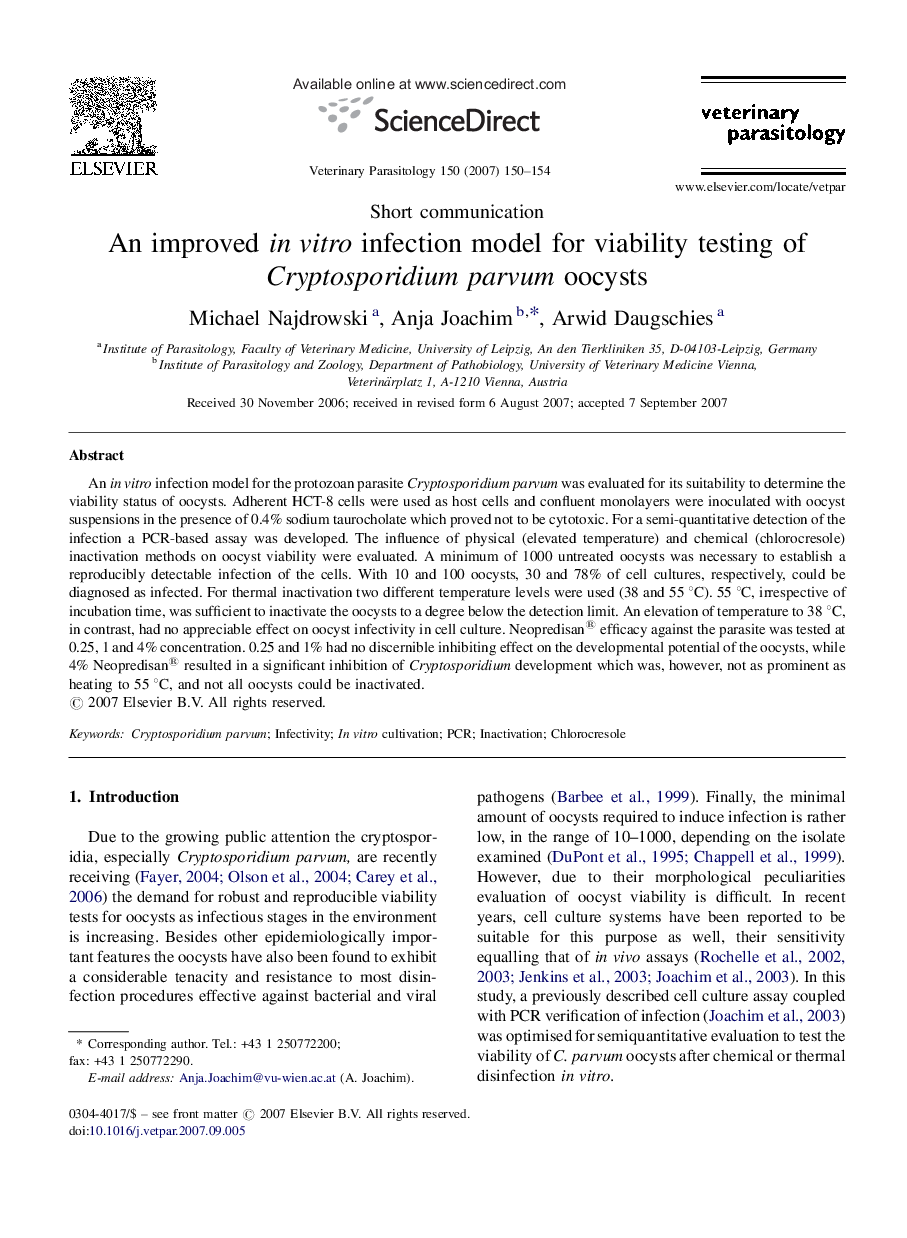| کد مقاله | کد نشریه | سال انتشار | مقاله انگلیسی | نسخه تمام متن |
|---|---|---|---|---|
| 2471855 | 1555775 | 2007 | 5 صفحه PDF | دانلود رایگان |

An in vitro infection model for the protozoan parasite Cryptosporidium parvum was evaluated for its suitability to determine the viability status of oocysts. Adherent HCT-8 cells were used as host cells and confluent monolayers were inoculated with oocyst suspensions in the presence of 0.4% sodium taurocholate which proved not to be cytotoxic. For a semi-quantitative detection of the infection a PCR-based assay was developed. The influence of physical (elevated temperature) and chemical (chlorocresole) inactivation methods on oocyst viability were evaluated. A minimum of 1000 untreated oocysts was necessary to establish a reproducibly detectable infection of the cells. With 10 and 100 oocysts, 30 and 78% of cell cultures, respectively, could be diagnosed as infected. For thermal inactivation two different temperature levels were used (38 and 55 °C). 55 °C, irrespective of incubation time, was sufficient to inactivate the oocysts to a degree below the detection limit. An elevation of temperature to 38 °C, in contrast, had no appreciable effect on oocyst infectivity in cell culture. Neopredisan® efficacy against the parasite was tested at 0.25, 1 and 4% concentration. 0.25 and 1% had no discernible inhibiting effect on the developmental potential of the oocysts, while 4% Neopredisan® resulted in a significant inhibition of Cryptosporidium development which was, however, not as prominent as heating to 55 °C, and not all oocysts could be inactivated.
Journal: Veterinary Parasitology - Volume 150, Issues 1–2, 30 November 2007, Pages 150–154